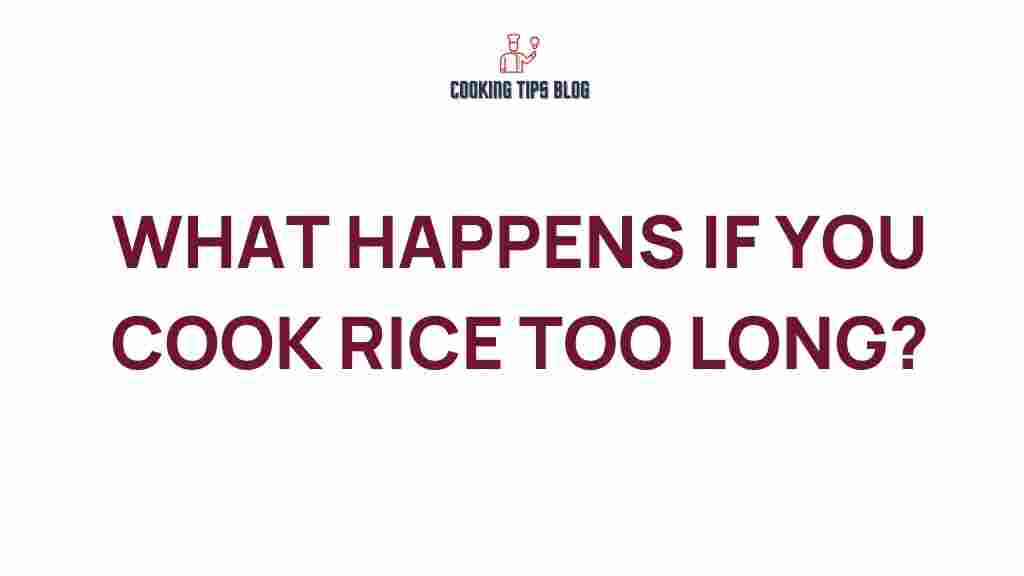The Surprising Effects of Overcooked Rice
When it comes to cooking rice, achieving the perfect texture is crucial. While many people focus on the right cooking time and water-to-rice ratio, few consider the effects of overcooked rice. This common mistake can lead to unexpected consequences, not only affecting the flavor and texture but also impacting nutritional value and digestion. In this article, we will explore the surprising effects of overcooking rice, tips to avoid it, and how to salvage your meals when mistakes happen.
Understanding Overcooked Rice
Overcooked rice is often characterized by a mushy texture and sticky consistency. This occurs when rice is cooked for too long or in too much water. Understanding the stages of rice cooking can help you identify the warning signs of overcooking.
The Cooking Process
Rice cooking typically involves three main stages:
- Absorption: The rice grains absorb water and swell, becoming tender.
- Steaming: As the water evaporates, the rice continues to steam, which helps cook the grains evenly.
- Drying: Eventually, the remaining water evaporates, and the rice becomes fluffy.
When rice is overcooked, it fails to reach the drying stage properly. Instead, it becomes soggy and unappetizing. Let’s delve into the surprising effects of this culinary mishap.
The Effects of Overcooked Rice
1. Texture and Taste
One of the most noticeable effects of overcooked rice is the alteration in texture and taste. Overcooked rice can be:
- Mushy: The grains lose their shape and become overly soft.
- Sticky: The starches released during excessive cooking can cause the rice to clump together.
- Flavorless: Overcooking can lead to a bland taste, diminishing the natural flavors of the rice.
2. Nutritional Value
Overcooking rice can also affect its nutritional profile:
- Loss of Nutrients: Essential vitamins and minerals can be lost during prolonged cooking.
- Increased Glycemic Index: Overcooked rice may have a higher glycemic index, which can affect blood sugar levels.
3. Digestive Issues
Consuming overcooked rice can lead to digestive discomfort:
- Difficulty Digesting: The mushiness can make it harder for your body to break down the starches.
- Increased Gas: Some individuals may experience bloating or gas due to the altered structure of the rice.
How to Cook Rice Perfectly
To avoid the pitfalls of overcooked rice, follow these steps for perfect rice every time:
Step 1: Choose the Right Rice
Different types of rice require different cooking times and water ratios. Common types include:
- Long-Grain Rice: Fluffy and separate when cooked (e.g., Basmati, Jasmine).
- Medium-Grain Rice: Slightly more sticky (e.g., Arborio, Valencia).
- Short-Grain Rice: Very sticky and clumps together (e.g., Sushi rice).
Step 2: Measure Water Accurately
Use the right water-to-rice ratio. A general rule is:
- 1 cup of long-grain rice to 2 cups of water.
- 1 cup of medium-grain rice to 1.5 cups of water.
- 1 cup of short-grain rice to 1.25 cups of water.
Step 3: Cooking Method
Follow these cooking methods for best results:
- Stovetop: Bring water to a boil, add rice, reduce heat, cover, and simmer for the recommended time.
- Rice Cooker: Simply add rice and water according to the instructions and let the machine do the work.
- Instant Pot: Use the pressure cooking function for a quick and easy option.
Step 4: Timing is Key
Keep an eye on the clock. Cooking times can vary based on the type of rice and method used:
- Long-grain rice: 15-20 minutes.
- Medium-grain rice: 18-22 minutes.
- Short-grain rice: 20-25 minutes.
Troubleshooting Overcooked Rice
Despite your best efforts, you might still end up with overcooked rice. Here are some troubleshooting tips:
1. If Rice is Too Mushy
If you find that your rice has turned out mushy, try the following:
- Draining Excess Water: If the rice is sitting in excess water, drain it immediately.
- Spread It Out: Transfer the rice to a baking sheet and spread it out to cool and dry out.
- Reheat with Care: If you must serve it, reheat it gently to prevent further mushiness.
2. If Rice is Sticky
For sticky rice, consider these solutions:
- Rinse with Cold Water: Rinse the rice under cold water to reduce stickiness.
- Fluff with a Fork: Gently fluff the rice with a fork to separate the grains.
- Mix with Other Ingredients: Incorporate the rice into a stir-fry or salad to balance the texture.
3. If Rice is Burnt
In the unfortunate event of burnt rice:
- Remove from Heat: Immediately remove the pot from the heat to prevent further burning.
- Transfer Edible Rice: Carefully transfer the unburnt rice to another pot, avoiding the burnt layer.
- Add Flavor: Consider adding broth or spices to salvage the flavor.
Conclusion
Overcooking rice might seem trivial, but the effects can be surprisingly significant. From altered texture and taste to nutritional losses and digestive issues, it’s essential to be mindful when cooking rice. By understanding the cooking process, following proper techniques, and knowing how to troubleshoot mistakes, you can ensure that your rice dishes are always a delight.
For more cooking tips and ideas, check out our cooking guide. And remember, practice makes perfect—so don’t be discouraged if you encounter overcooked rice now and then!
For additional insights into rice cooking techniques, visit this resource.
This article is in the category Tools and created by Cookingtipsblog Team
